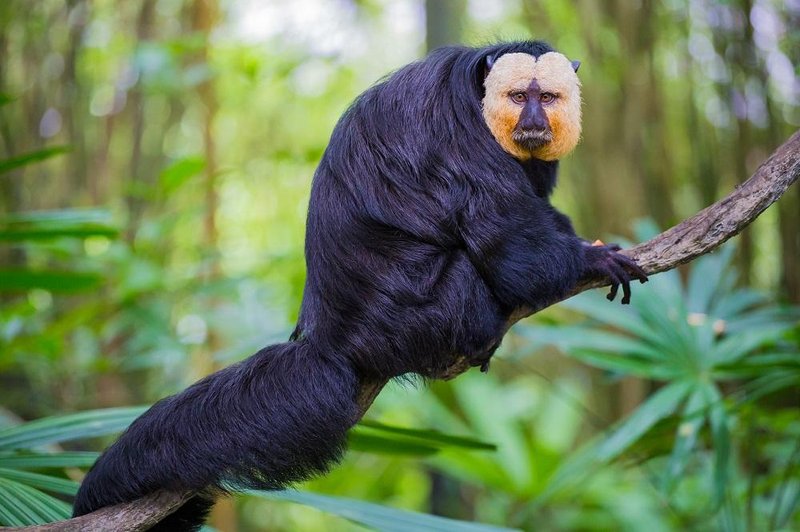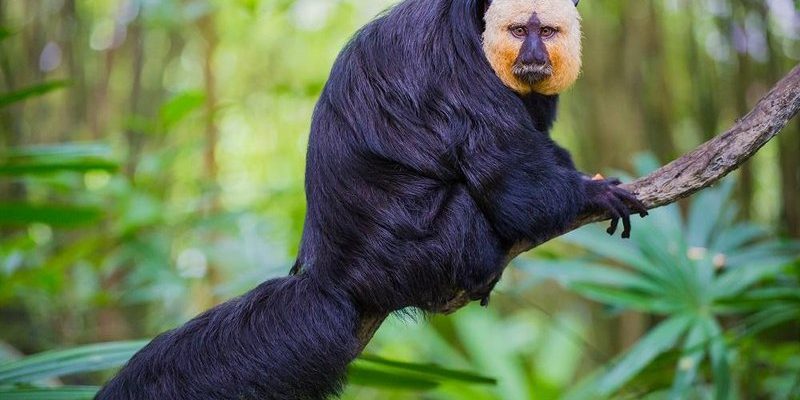
Saki monkeys are particularly notable for their incredible social behaviors and unique parenting styles. Found primarily in the lush canopies of South America, these monkeys thrive in groups, which plays a huge role in how they raise their young. Whether you’re a wildlife enthusiast or simply curious about how animals care for their offspring, you’re in for an interesting journey into the world of saki monkeys.
The Family Structure of Saki Monkeys
Saki monkeys typically live in small groups, which can range from a few individuals to up to 12. These groups usually consist of a dominant male and several females, each with strong bonds among them. Social cohesion is vital in their communities, as it enhances the safety and wellbeing of both adults and infants.
In the wild, these monkeys arrange themselves in a hierarchy, providing a network of support for the mothers and their babies. The dominant male often leads the group and plays a crucial role in protecting the family. This shared responsibility creates a nurturing environment for the young, who benefit from both direct care and the protection provided by multiple adults.
Interestingly, siblings can also assist in caring for the young ones. Older brothers and sisters contribute to the upbringing of infants, learning essential survival and social skills through this experience. It’s a beautiful example of how social structure and family dynamics work hand-in-hand. By sharing these responsibilities, the saki monkey community ensures that every infant has the best chance of thriving.
Gestation and Birth
The journey of raising young saki monkeys begins with a typical gestation period of about 5 to 6 months. After this time, the mother gives birth to usually one, sometimes two babies. Mothers take on the primary role during this early phase of life, learning the ropes as they go along.
At birth, the infant monkeys are quite fragile, weighing only around 300 grams. They are born blind and require constant attention. The mother cradles them close to her body, keeping them warm and secure. This close contact helps to strengthen their bond. Imagine a newborn snuggled up against its parent, feeling safe and loved—that’s the essence of this relationship.
After the first few weeks, the babies start to open their eyes and become more aware of their surroundings. At this point, it becomes essential for the mother to introduce them to the group. Here’s the thing: the more the baby interacts with others in the family, the better they adapt to the social environment, which is crucial for their development.
The Role of Males in Parenting
You might be surprised to learn that male saki monkeys play an active role in parenting, which isn’t as common in many animal species. The dominant male often helps with the protection and wellbeing of the infants, providing an extra layer of security against potential threats.
Males can frequently be seen carrying the young on their backs, allowing the mothers to forage for food and take a break. This behavior not only helps the mother but also strengthens the bond between the male and the infant. You might even catch a glimpse of enthusiastic playtime, with males engaging in gentle interactions that promote social learning for the young ones.
Through this cooperative parenting, the young saki monkeys gain exposure to different adult figures, which helps them learn social cues and develop important survival skills. It’s a testament to the idea that it takes a village—not just for humans, but also for saki monkeys!
Feeding and Foraging for Infants
Saki monkeys primarily feed on fruits, seeds, and leaves found high in the trees. Once the infants are old enough to be introduced to solid food, the entire family participates in foraging. Mothers often begin by sharing small bits of food with their young, teaching them how to eat safely.
The process of foraging is fascinating to observe. Saki monkeys typically look for food in groups, moving through the canopy while keeping an eye out for dangers. The infants watch and learn from the adults, mimicking their behavior as they grow. This kind of playful imitation is critical for their development.
As the young saki monkeys get a bit older, they start to show interest in exploring their environment. At this stage, it’s essential for them to develop a sense of independence. Mothers often allow them to venture a little further, all while keeping a watchful eye. Nurturing this independence is crucial, as it prepares the young for the challenges they’ll face as adults.
Social Learning and Play
One of the most interesting aspects of how saki monkeys raise their young involves play and social learning. As any parent knows, play is more than just fun; it’s a vital way for youngsters to learn important life skills. Young saki monkeys spend much of their time engaging in playful activities with their siblings and other group members.
During playtime, they learn about social dynamics, how to interact with peers, and even physical skills necessary for navigating their arboreal world. Picture a group of little monkeys leaping from branch to branch, chasing each other and practicing their climbing skills. This kind of play helps them build strength and coordination.
Importantly, social play also helps saki monkeys develop bonds with their peers. These relationships are crucial for their survival, as it cultivates a sense of community and cooperation that lasts throughout their lives. In many ways, this playful learning mirrors how human children develop their social skills, emphasizing the importance of interaction and play.
Challenges in Raising Young Saki Monkeys
Despite the strong communal support, raising saki monkeys isn’t without its challenges. Predation is a significant threat—young monkeys are vulnerable and can become targets for birds of prey or larger mammals. This is why the presence of multiple adults is so important. With many eyes on the lookout, it increases the chances of spotting danger early.
Another challenge comes from habitat loss due to deforestation. As humans encroach on their natural environments, saki monkeys are forced into smaller areas, which can strain their resources and make finding food and shelter difficult. This situation can lead to stress within the group, affecting the parenting dynamics.
It’s heartening, though, to see how resilient these monkeys are. Their strong social bonds and cooperative caregiving strategies help them adapt to challenges. Observing their behavior offers profound insight into the complexities of animal life and human-like parenting strategies, showcasing the beauty and struggle of raising young in the wild.
In summary, saki monkeys raise their young through a combination of cooperative parenting, social learning, and shared responsibilities. From their family structure to their feeding habits, every aspect plays a crucial role in ensuring their young thrive in the vibrant world of the rainforest. So next time you think about animal parenting, remember the incredible journey of these tiny monkeys and the rich social tapestry that supports them.

